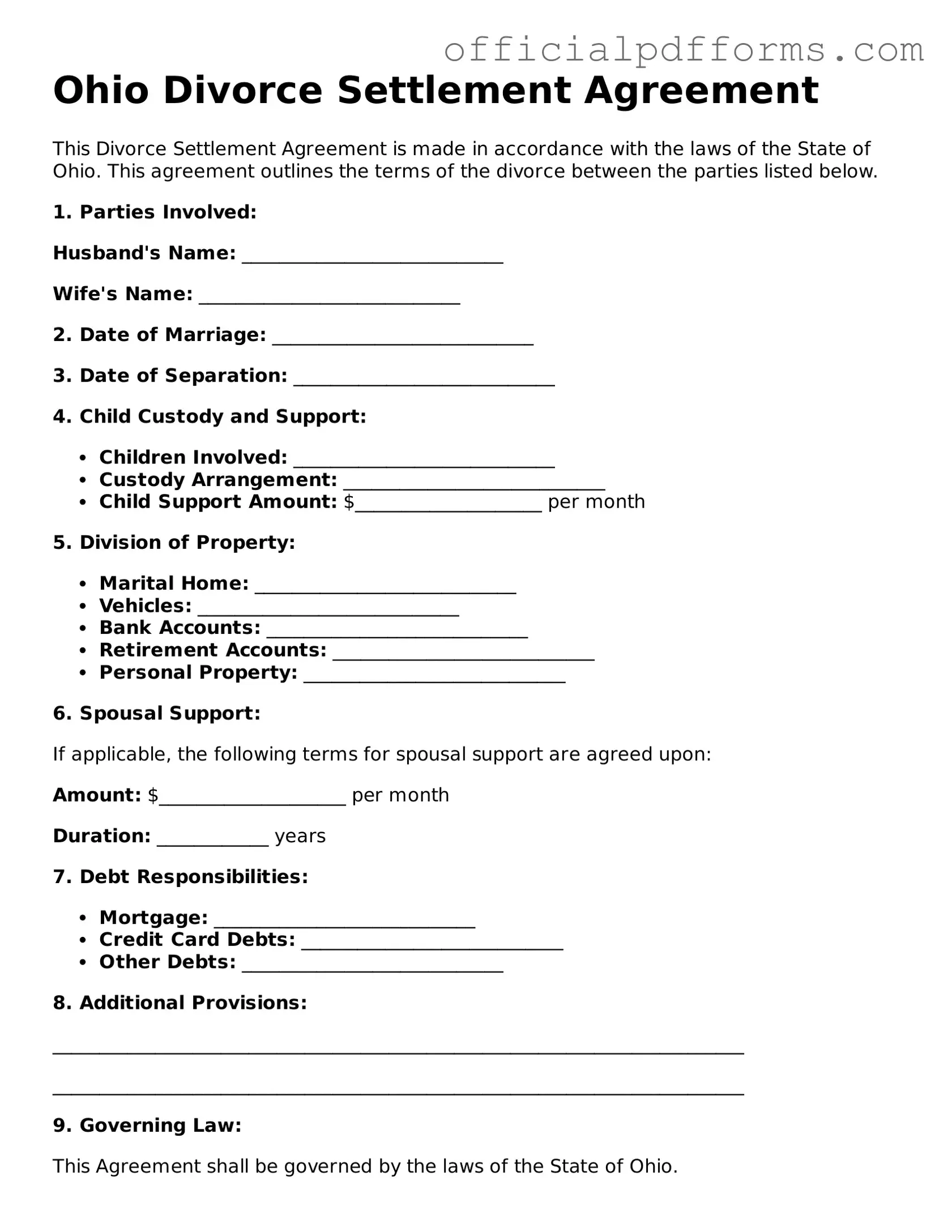The Ohio Divorce Settlement Agreement form is a legal document that outlines the terms agreed upon by both parties during a divorce. It covers various aspects such as property division, child custody, child support, and spousal support. This agreement helps to clarify the responsibilities and rights of each party after the divorce is finalized.
Both spouses involved in the divorce need to complete the Divorce Settlement Agreement form. It is important that both parties agree to the terms laid out in the document. This ensures that the divorce process is smoother and that both parties have a clear understanding of their obligations.
What should be included in the agreement?
The agreement should include several key elements:
-
Division of marital property and debts
-
Child custody arrangements
-
Child support payments
-
Spousal support (alimony) details
-
Any other relevant terms both parties agree upon
How is the agreement enforced?
Once both parties sign the Divorce Settlement Agreement, it becomes a binding contract. If one party fails to comply with the terms, the other party may seek enforcement through the court. This can involve legal actions to ensure compliance with the agreement.
Can the agreement be modified after it is signed?
Yes, the Divorce Settlement Agreement can be modified, but both parties must agree to the changes. If circumstances change significantly, such as a job loss or a change in the child's needs, a court may allow modifications to child support or custody arrangements.
While it is not legally required to have an attorney, it is highly recommended. An attorney can help ensure that the agreement is fair and complies with Ohio laws. They can also provide guidance on any complex issues that may arise during the divorce process.
Where do I file the Divorce Settlement Agreement?
The completed Divorce Settlement Agreement should be filed with the court where the divorce proceedings are taking place. Typically, this will be the domestic relations court in the county where either spouse resides.
How long does it take for the court to approve the agreement?
The time it takes for the court to approve the Divorce Settlement Agreement can vary. Generally, it may take a few weeks to a couple of months, depending on the court's schedule and whether any issues arise during the review process.
What happens if we cannot agree on the terms?
If both parties cannot agree on the terms of the Divorce Settlement Agreement, they may need to go through mediation or court hearings. A mediator can help facilitate discussions, while a judge will make the final decisions if the case goes to court.
Are there any fees associated with filing the agreement?
Yes, there may be filing fees associated with submitting the Divorce Settlement Agreement to the court. These fees can vary by county. It is advisable to check with the local court for specific fee amounts and payment methods.
